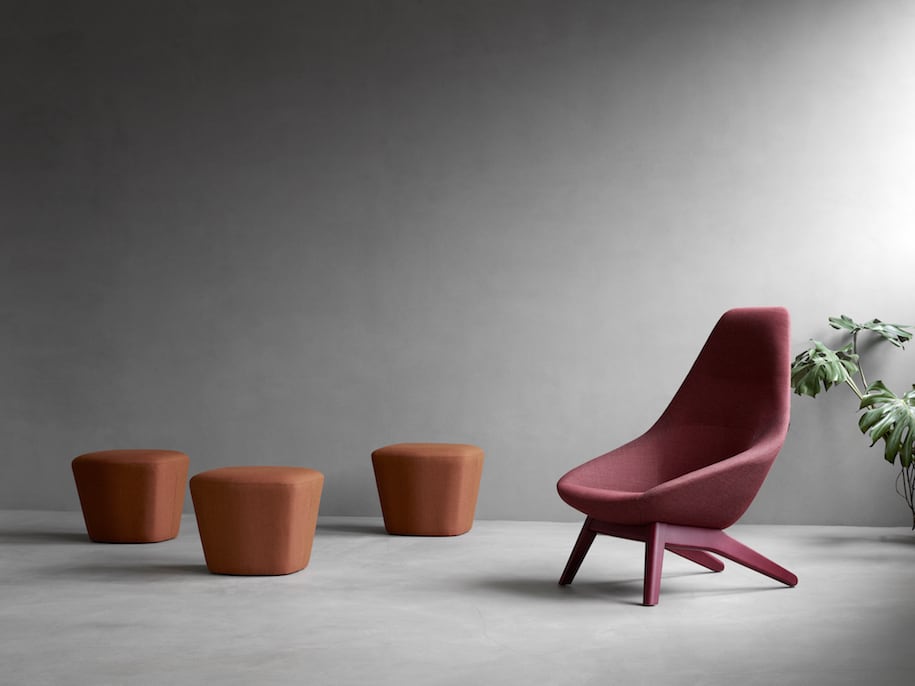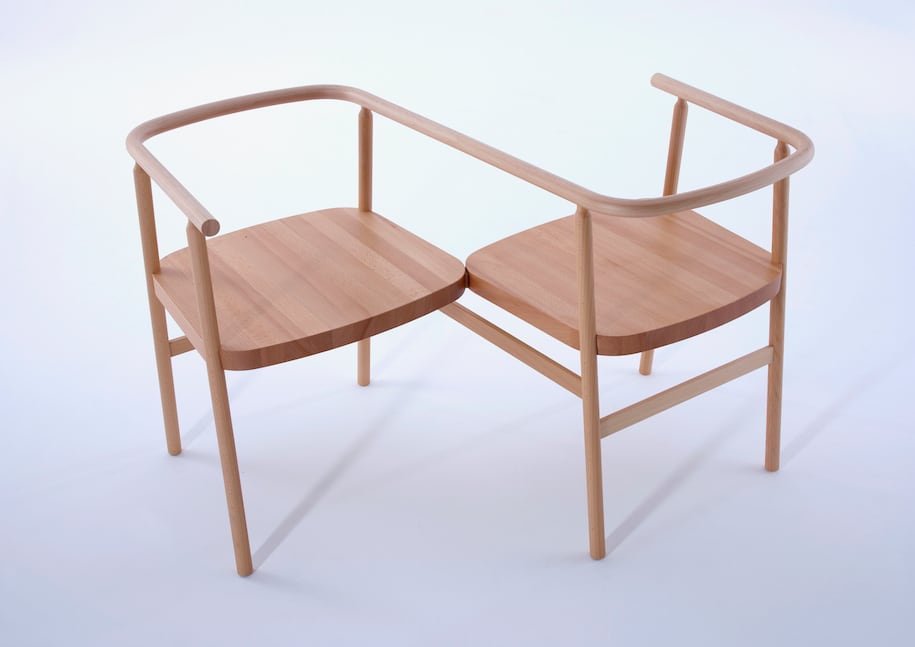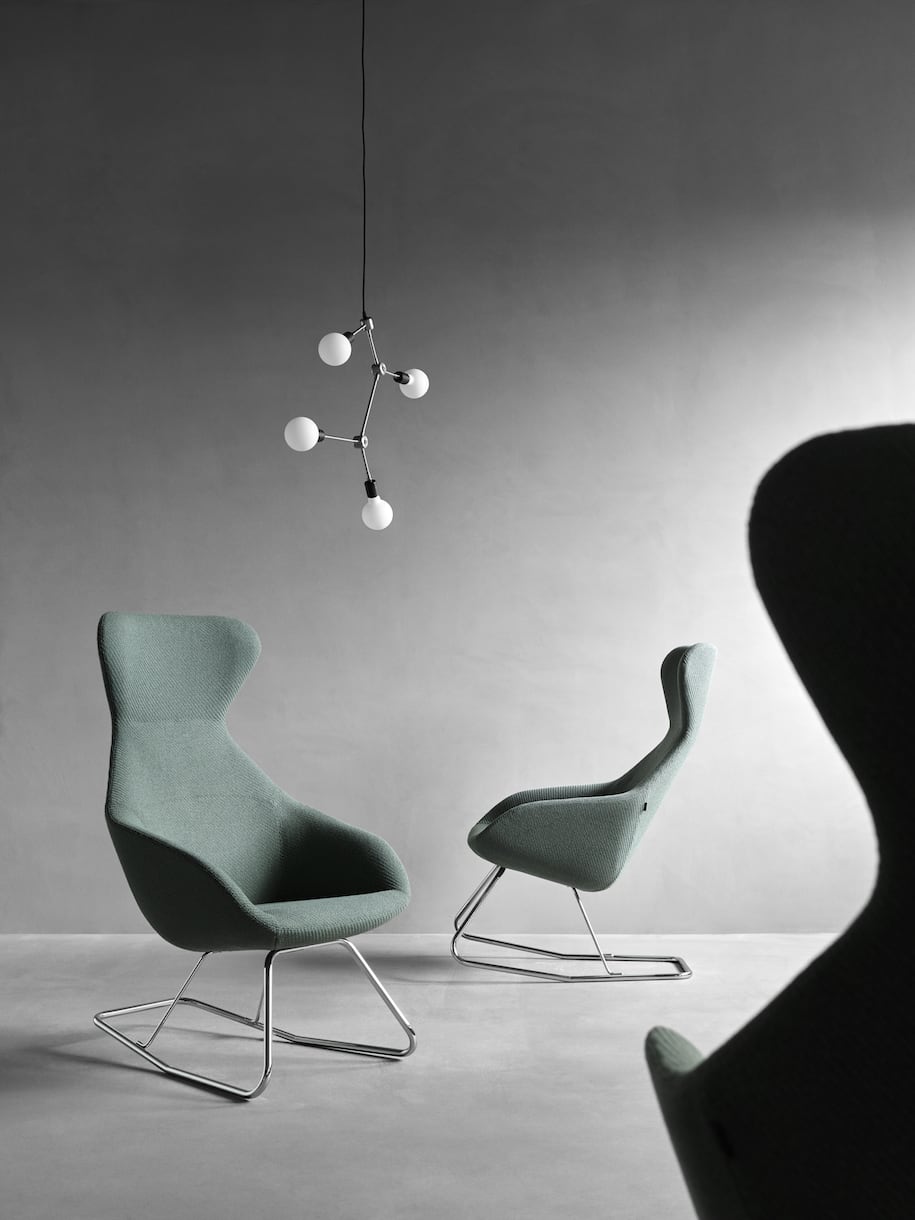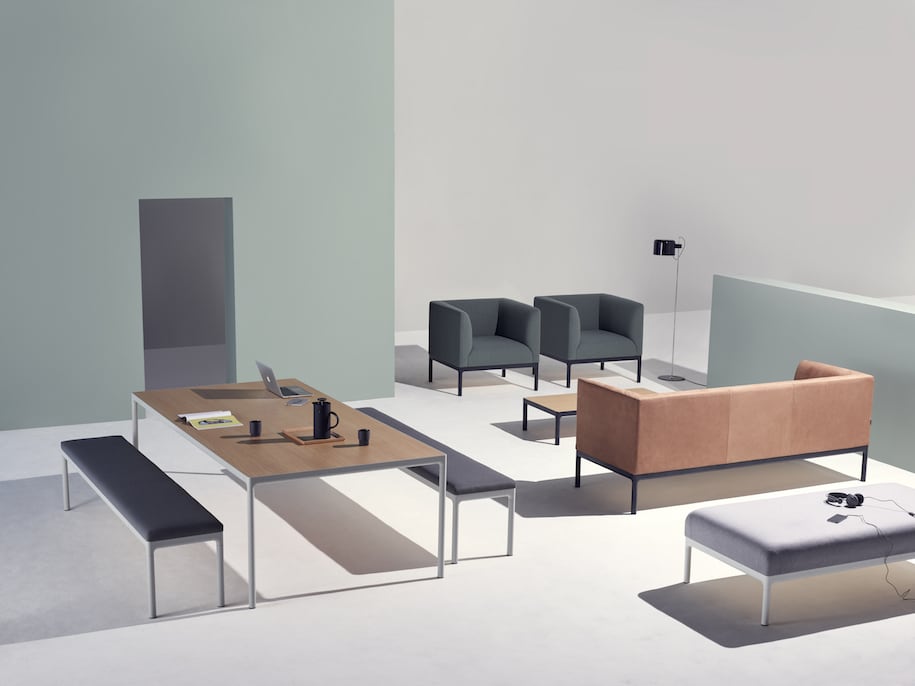We are very happy that Luke Pearson and Tom Lloyd, the founders and directors of the acclaimed London design studio PearsonLloyd, will be joining us at ESO 2018 as invited speakers by Inmind. In their presentation, titled ‘Modelling the Near Future: Collision and Mutation’ they will explore how design thinking can help model new ‘Near Future’ experiences, products and services in response to the rapid change that society is experiencing today. Archisearch met them in London to discuss their current projects, their design approach and their thoughts on contemporary design.
PearsonLloyd is a product, furniture and innovation design studio led by founders Luke Pearson and Tom Lloyd, and run from a studio in Shoreditch, East London. For the last twenty years, the agency has designed products, systems and environments for the home, workplace, transport and healthcare sectors. Its close relationship with clients including consumer brands, manufacturers and retailers has given the agency unparalleled experience in understanding the needs of users and the demands of business.
The agency’s work is driven by a need to understand and interpret a world that is experiencing rapid and often unexpected change. Its in depth research into these changes – in both the material and digital world – enables PearsonLloyd to create design solutions that are appropriate and relevant for manufacturers, brands and users. The studio is highly collaborative in its approach. It embraces the restrictions imposed by product type, function, material and process and delivers products that are beautiful, efficient and useful.
Luke and Tom were awarded the distinction of Royal Designers for Industry by The Royal Society of Arts in 2008 and in 2012 were named in the top 50 designers ‘Shaping the Future’ by Fast-Co Magazine in New York. They have lectured for a number of years at ECAL and the RCA and regularly talk at international platforms.
For more than twenty years now you run a very successful design studio in east London, designing products, systems and environments for the home, workplace, transport and healthcare sectors. How did you initially decide to establish your practice and what were your early-day goals?
Luke Pearson: We met at college five years earlier and when we graduated, we realised that we had some similarities, in the sense that I got industrial design for my undergraduate studies and furniture design in my post-graduate, whereas Tom had done the opposite. So, we both swapped disciplines. At the time, the disciplines were taught quite separately, and afterwards, you would go on working in very different ways. In Italy for example, it has always been different, in the sense that designers were polymath. But I think we were always interested in the realities of commerce and industry that reflect contemporary trends, mass production and the market, and at the same time in the crafts which have always been mostly family-owned businesses and small cultural environments. After graduation, we went on working with consultancies and carried on talking about this crossover between the two disciplines; the one driven by archetype, history, and craft, and the other one potentially driven by very big and quick changes in technology. And so, we then talked about setting up a studio and, set up a studio!

Have your ambitions changed in the course of time? Does that reflect how the industry has changed as well?
LP: I think some of the ambitions were exactly the same. We were always interested in how these two different cultures overlap and it is really the overlap the space that we have been trying to inhabit. The way which we design today is definitely very different, as a result of the tools that allowed many people to transition from one discipline to another when they wouldn’t naturally find themselves there. I think there are still people who are ‘by nature’ furniture designers or ‘by nature’ product designers. But I think that the idea that someone can be more fluid, is now well established.
How would you describe your approach to design?
Tom Lloyd: We believe that the act of designing is a collaborative act. We are very interested in partnership as an idea and I think it starts with the partnership between me and Luke. We like the tension of developing a relationship with the client, understanding and absorbing the impact of their needs, so that all the parameters, their culture, their history, their location and the language act critically for our work. We very rarely do work independently just as a ‘PearsonLloyd’ idea. We really celebrate and cherish what the client gives us in terms of the brief. Same as designing a building on the corner of the street; the context is critical, and for us that process of partnership is quite significant.
We have a little phrase people-place-product. And how they rely on each other to be meaningful. People need products, furniture and they inhabit an environment, a space. And we are not interior designers really, we are certainly not architects, but space is at every stage of the work we do. We try to effect and manipulate it and pay close attention to the relationship of our furniture to that space. We also like the way that narrative informs our work. People have to experience it without a label, without instructions. It has to be very instinctive and self-evident.
LP: Everything has influence, even on a visual level. Just the way something looks can change the way you behave about it. One particular piece of furniture we did for example, the Love Seat for Teknion, was about the simplicity of proximity. It was about interaction and the personal, safe relationship between two people. That was at the beginning of our relationship with Teknion, when we wanted to talk about different topics; interaction, collaboration, concentration. It’s quite rare that we do things which are emblematic. Most of our work is physically practical, for a defined purpose but that was different, it was trying to provoke a conversation.

Your work, ranging from healthcare aids to aviation environments, encompasses diverse factors and responds to different requirements and audiences. How do you achieve working successfully on different types of design projects?
LP: On one level, it’s not that complicated. It’s always about humans – we don’t change. There are lots of things that repeat themselves in different scenarios, in different sectors. One of the things we really enjoy is to understand what the human factors are, what the behaviour factors are. So, the physicality of the design goes around it. Yes, you have to learn a little bit about aviation standards for example, but you don’t have to learn about humans. So, a lot of it you bring with you and then, you are working with teams who bring a lot of the technical support. But actually, it also liberates you not knowing everything, because you then can ask questions. You are prepared to try things that you don’t know will fail or you don’t know what comes close to succeeding. This helps, I think to create a platform for innovation or for chance or for mutation.
TL: The other thing is that you see the research in these different sectors and if you transfer that research from one sector to another you find a very rich transition, or cross-fertilisation. We are much more interested in ideas around behaviour. Behaviour being the kind of starting point for every conversation. What do we want – how do we model behaviour in a certain space, an environment or a certain need? And then we build up a physical response around that kind of a ‘behaviour brief’. Sometimes it’s very archetypal, other times we really try to understand how the behaviour context can affect the response.

What is the role of research in your working process?
LP: There are many layers of research. Obviously, you can use other people’s research and then you can gather it and collate it in different proportions to gain insight. Occasionally, of course we build mock-ups, test our scenarios, study different user groups to see how they respond to different settings and of course, we get feedback from that. And sometimes it’s a strange sort of almost an intuition, when there is no doubt about it; you are using experience, bits of quantifiable research, but then you mix it with a creative ‘what if’. And I probably think this is the essence of design. It’s that moment when you ‘ve got some facts and you rearrange them to allow you to see a ‘what if’.
TL: Apart from design, it’s also a process of editing. We edit other people’s research and we conduct our own research. What goes from an economic study to politics, technology, society, immigration, demographics are in fact big subject matters that affect all of us. We have to be very tuned in to those changes, otherwise how can our work be relevant? But actually, the talk we are giving in Greece is trying to address a lot of those things.
What will be the topic of your talk at the ESO conference?
TL: The first thing we will be looking at is the idea of collision. There are multiple changes going on in the world at the moment, whether they are technological, cultural, social, demographic, political. These changes are creating a vortex of change in human behaviour, in the environment, in services, in business models etc. In our talk, we will investigate the role of design with regards to that, and particularly, how it can somehow interpret that sort of chaos and make sense of the near future. As design thinkers, we can try to make sense of this extraordinary change and help to articulate and to interpret the world, so we will be trying to use some of our work to explain that.
LP: In the last three years, we ‘ve been launching a series of projects for Teknion, that aim to research future workplace trends and opportunities. Since we started working in design, we have been responding to the phenomenal changes that technology has brought about in the way we work. The collection embodies a lot of these observations. Teknion represents this idea of collision and the changes that are taking place in our work life. So generally, the reality, is that you ‘ve got these things in isolation that have been there for a long time and then suddenly they come into interference with each other and out of that, something emerges. I think what is fascinating at the moment, is that we ‘ve got many things which somehow are connected in a way that they never were before.
TL: And also, very practically – twenty years ago house, office, hotel, were very different typologies, buildings or experience, but now they are very close. And I think there is a blending going on in typology for both furniture and building types and of experience. In the last few years, many things have gone from a niche experience to quite a mainstream thing particularly around the workplace, such as the emergence of coffee-culture. That is often stimulated as Luke says, by technology and also by changing the idea of what health and wellness is in workplaces.

What are you working on at the moment?
LP: We ‘ve got a very big aviation model for Lufthansa, we have healthcare products, and we are launching a new product this year which is for the 3rd age. This is very interesting, because while everyone designs for the youth, actually in the near future, we are going to have a huge increase in the third age population. We also have lots of furniture coming out.
TL: We are still very interested in how you can blend the traditional crafts of making objects with insight-driven thinking and our work is some sort of layering of that process. Sometimes we are looking at the big picture trying to tackle some difficult subject matter, like how the workplace is changing, and other times we are focusing on a beautiful chair. Our practice is really an interplay between those two parts and there is a balance in the physical needs of the user, the needs of the client and the needs of society. There are three layers there and for every project we have a responsibility to understand its impact on those three groups. All these things are knitted together in our work all the time and we try to see how they influence each other.
LP: Interestingly when we started we had the ambition to work on all these areas. It was utterly intuitively, probably just based on an interest of ‘wanting to do it’. Whereas now, we are beginning to see how all these areas begin to converge with each other, in terms of not just product overlaps – which I think is a global thing -, but also design thinking. Which means that for us, the overlap would be that the people who fly on our seats, end up in our hotel rooms, end up on our desks. The ability to put your gaze on one individual – to ‘follow the consumer’ in a way – really helps you to build that understanding. But I think design needs to increase the understanding of itself. Everybody can make something that looks like design on their computers. But I think the intelligence and empathy are quite difficult things to achieve and you need to struggle for a little bit longer. Obviously, there is some science in it, some solid quantifiable metrics, but there is also the other side which is softened, it’s the touch and feel. That is the resonance which is really fascinating, how these two aspects sort of hover together.
Luke Pearson and Tom Lloyd are speaking at ESO conference which will take place on the 1st of March 2018 at Onassis Cultural Centre. More info here: http://esw.gr/
READ ALSO: Q&A with Thatcher Bean director of Madein Ilima | ADFF Athens